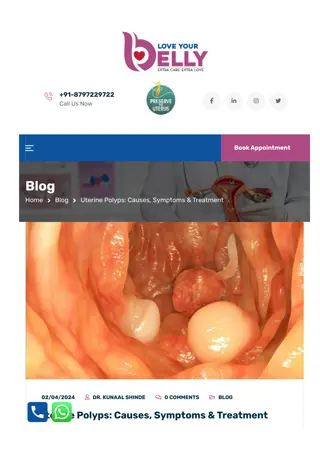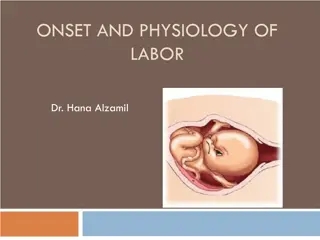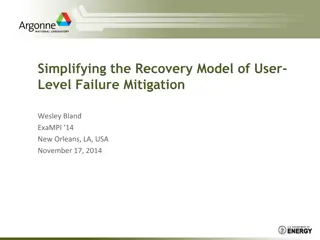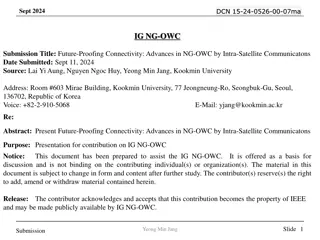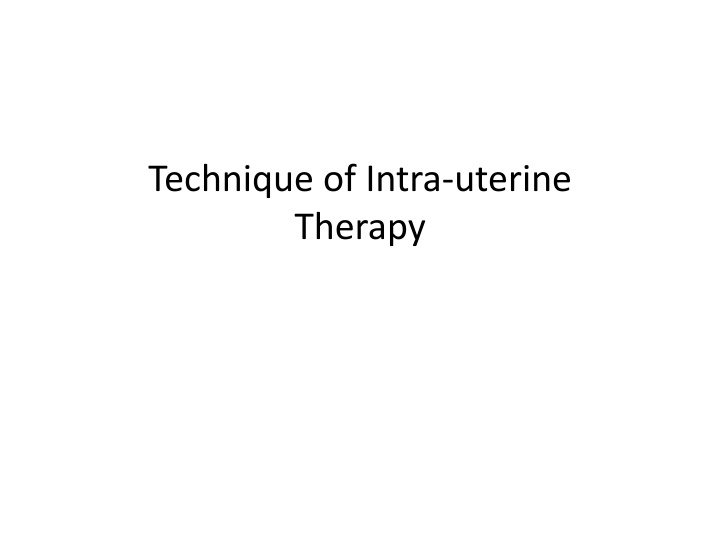
Technique of Intra-uterine Therapy Procedure
Introduction of drugs into the uterus to combat infections in various conditions, involving a meticulous procedure using specialized apparatus, catheters, and syringes. Steps include cleansing the perineal area, inserting instruments into the uterus, and ensuring proper placement to deliver the medication effectively. Key points emphasize the importance of skill and caution during the process to achieve successful outcomes without complications.
Download Presentation

Please find below an Image/Link to download the presentation.
The content on the website is provided AS IS for your information and personal use only. It may not be sold, licensed, or shared on other websites without obtaining consent from the author. If you encounter any issues during the download, it is possible that the publisher has removed the file from their server.
You are allowed to download the files provided on this website for personal or commercial use, subject to the condition that they are used lawfully. All files are the property of their respective owners.
The content on the website is provided AS IS for your information and personal use only. It may not be sold, licensed, or shared on other websites without obtaining consent from the author.
E N D
Presentation Transcript
Technique of Intra-uterine Therapy
OBJECTIVE: To introduce the drugs into the uterus to overcome the infection in various disease conditions. MATERIALS REQUIRED: Obel's apparatus, catheter, syringe, cotton, saline, pipettes, etc.
PROCEDURE 1.Clean vulva and perineal region with the dry cotton. 2.Insert the left hand in the rectum and remove the faecal material by back racking. 3.Spread vulva apart and insert the instrument (catheter or Obel's apparatus) up to fornix. 4.Hold the cervix between two fingers through rectal wall and keep thumb on the external os.
5.The catheter is initially inserted pointing upwards at an angle of about 30 to avoid entering into the external urethral opening and is then moved horizontally until it is engaged in the external os of the cervix.
6.Entry into the external os is accompanied by a characteristic "gritty' sensation. Thereafter, introduce the catheter through convoluted cervical canal by manipulation of the cervix through rectal wall. 7.Place one finger over the internal os of the cervix, so that the tip
IMPORTANT POINTS The recto-vaginal method of intrauterine medication requires considerable practice for success. Obstruction in passing catheter by vaginal folds can be minimized by pushing the cervix forward. By doing this, vaginal passage becomes unfolded. After passing catheter in the cervix, no forward pressure should be exerted on the catheter with the right hand because uterine wall is friable and easily penetrated if the catheter moves suddenly.
The most common fault during intra uterine therapy is twisting of cervix in the left hand which occludes uterine horns. INTERESTING FACTS The irritant solutions or antibiotics, such as Lugol's iodine , tetracycline, etc., when given intrauterine, affects the length of estrous cycle.
The irritant intrauterine infusions given during days 3 to 9 of the cycle (estrus day 0) may significantly shorten the time forthe female to return in oestrus. The infusions at estrus or mid-diestrus does not affect oestrous cycle length. The infusions on days 14 to 17 of the cycle (estrus day 0) prolong the luteal period or estrous cycle length.
Measures of reproductive performance
Fertility the ability of male and female animals to produce viable germ cells, mate, conceive and deliver normal living young The lifetime productivity of a cow is influenced by age at puberty .
1.age at first calving First calving marks the beginning of a cow's productive life . Age at first calving is closely related to generation interval and, therefore, influences response to selection. Under controlled breeding, heifers are usually mated when they are mature enough to withstand the stress of parturition and lactation.
2-Fertility (calving) rates Fertility in cattle is affected by environmental, genetic, disease and management factors. These influence the reproductive process at ovulation, fertilization or implantation or during gestation and parturition. The commonest estimate of fertility rate is the percentage of mated or inseminated cows that become pregnant (pregnancy rate) or finally calve (calving rate).
a- Effects of age and lactation found that fertility rate increased from 69% in 2.5-year-old cows to a maximum of 82% in 6- to 7 year-old cows and then declined. also recorded an increase in pregnancy rate from 50% in 3-year-old to 75% in 7-year-olds. Fertility then declined to 50% among 12-year-olds.
Causes of these age-related differences include locational stress in young growing animals and the ability of older cows to gain bodyweight and condition quickly after calving.
b- Effect of breed c- Effect of bodyweight d- Effects of year and season e- Genetic effects
3 Number of services per conception The number of services per conception (NSC) depends largely on the breeding system used. It is higher under uncontrolled natural breeding and low where hand-mating or artificial insemination is used.
4 .Calving interval Calving interval can be divided into three periods: gestation, postpartum anestrus (from calving to first estrus) and the service period (first postpartum estrus to conception). This is sometimes also called the "days open", period and is the part of the calving interval that can be shortened by improved herd management.
The days open period should not exceed 80-85 days if a calving interval of 12 months is to be achieved . This requires re- establishment of ovarian activity soon after calving and high conception rates. The duration of this period is influenced by nutrition, season, milk yield, parity, suckling and uterine involution. At any time, the effects of one or more of these factors may be confounded.

